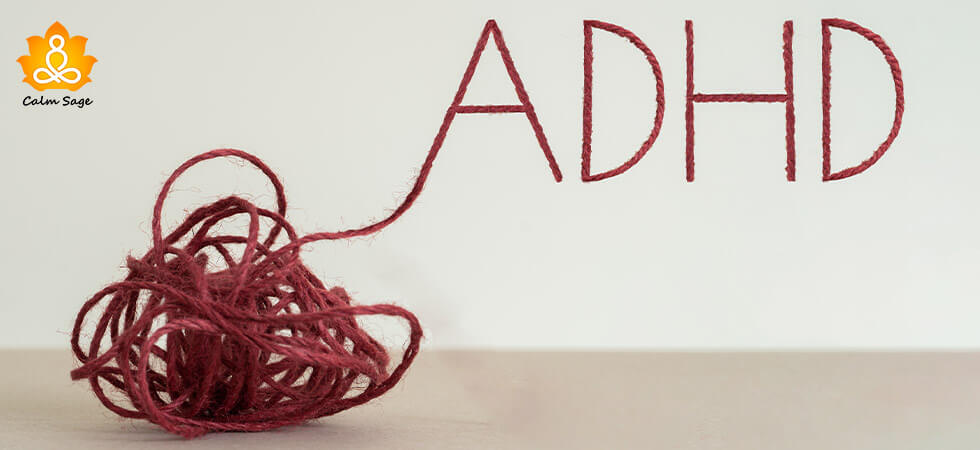Vocal Stimming in ADHD: What is It, Why it Happens, And How to Manage It

Have you ever wondered why some people with ADHD – Attention Deficit Hyperactivity Disorder – just can’t seem to sit still or even keep quiet? Even when they are alone? Well, the answer to this may lie in the fact that stimming, a behavior seemingly common in neurological disorders such as ADHD and autism, might come with vocal behaviors too.
Vocal stimming in ADHD is like a secret language of sounds that people with ADHD use to express their hyperactive and impulsive minds. Stimming, also known as self-stimulation, is when you engage in unconscious self-soothing behaviors, movements, and even sounds. This behavior is not limited to people with ADHD, almost all of us engage in some stimming actions.
I mean, if you’ve ever bitten your nails, twirled your hair, hummed under your breath, or even tapped your feet along to an unheard tune, then you’ve engaged in stimming. But what is it that makes stimming common in ADHD and other related conditions?
Let’s discover the vibrant tapestry of neurodiversity by understanding what vocal stimming and ADHD, why they happen, and how you can manage your little forms of self-expression.
What is Vocal Stimming?
If you talk quietly to yourself when no one’s around or if you hum a tune under your breath when you’re doing your mundane chores, then you might be engaging in vocal stimming. Vocal stimming is when someone makes repetitive sounds with their voice as a self-soothing action or just a way to entertain themselves. This is a common behavior in ADHD and autism.
Some common vocal stimming examples could include;
- Making small verbal sounds
- Humming
- Repeating words or phrases
- Echoing others’ words
- Tapping objects
- Tapping feet
- Snapping fingers
Types of ADHD Stimming
If we talk about ADHD and stimming, then stimming, you might find, is a common enough phenomenon in Attention Deficit Hyperactivity Disorder. ADHD is a neurological condition that can make concentrating for hours or sitting still difficult. Stimming is also a part of this condition. ADHD stimming is of various types, but the one that often stands out is vocal stimming.
Stimming is when you engage one of your senses to self-soothe. In ADHD, if it’s not vocal stimming, you may find people engaging in different stims, including;
- Skin rubbing
- Pacing
- Spinning in circles
- Rocking
- Smelling
- Licking, etc.
Vocal Stimming ADHD: Is There a Link?
Now, you might wonder, “Is there a link between ADHD and vocal stimming?” Well, people with ADHD often have busy brains – almost like having too many tabs open in the mind with hundreds of thoughts swirling around and still having no clue where the music is coming from! Vocal stimming, for many, can be beneficial in tuning out the restless chatter and focusing on one thing at a time.
Vocal stimming is linked with ADHD, but this behavior is not a sign or symptom of ADHD. ADHD is a disorder that involves challenges with attention, hyperactivity, and impulse control. However, people with ADHD can engage in stimming to self-soothe or manage their sensory experiences. Stimming is not exclusive to ADHD and can often be observed in other neurodevelopmental conditions such as autism spectrum disorder or sensory processing disorders.
While vocal stimming can occur in ADHD, it’s just one of the many behaviors that occur in ADHD and cannot be used to make a diagnosis. A professional, with an assessment, can only diagnose ADHD.
What Causes Vocal Stimming in ADHD?
Talking about the “why” of vocal stimming in ADHD, let’s make a few things clear. It’s not entirely understood why folks with ADHD engage in vocal stimming, but there have been a few theories put forward about this behavior. One reason why vocal stimming happens is because it’s a way to release the pent-up energy that people with ADHD often find overflowing or it’s a way to keep the wandering minds and thoughts in check.
Some studies suggest that restlessness or decreased control over motor functions can cause vocal stimming in ADHD. If you live with ADHD, then you may also experience hypersensitivity. This hypersensitivity can also become a reason you stim because your mind can’t always separate which sound is important.
Some common causes or triggers of ADHD stimming can include;
- Boredom
- Overwhelming feelings
- Distractions
- Poor sleep
- Lack of activity
- Fear or stress
- Excitement
Other Conditions that Coexist with ADHD Stimming
ADHD doesn’t always travel alone. It often brings along some companions, like anxiety or sensory issues. More often than not, ADHD stimming can look a lot similar to movements that can be observed in ASD – Autism Spectrum Disorder. Vocal stimming in autism can include random shrieking, humming, and echoing words and phrases.
Another condition that can look and feel similar to ADHD stimming can be Tourette syndrome. Tourette syndrome is a tic disorder that can cause repetitive movements or tics that can look a lot like stims. However, ADHD and Tics are not related. One doesn’t cause the other, despite the similarities they share.
Managing Vocal Stimming in ADHD
Before we learn the ways, you can manage vocal stimming in ADHD, it’s important to remember that vocal stimming isn’t something that can be or should be stopped. This behavior can be good for you and help you manage, focus, and self-regulate your actions and thoughts.
These tips might come in handy when your vocal stims become too much or too disruptive in your day-to-day lives;
1. Understand your triggers:
You need to first understand what situations or emotions cause or trigger your vocal stimming. When you know what causes your stims, only then can you truly know how to manage the causes and the stims that come with them.
2. Use fidget toys:
You can also use fidget toys such as a fidget spinner or other games to redirect your attention or the need for stimulation. Stress balls, fidget spinners, and other objects can be used. Give them a try and see if they work for you.
3. Set aside time:
Another way you can manage your vocal stims is by setting aside time and place for your self-stimulation. It’ll be like having time and space for your inner vocal party without disturbing anyone else, least of all yourself.
4. Seek help:
You can also consider speaking to a therapist who specializes in ADHD and stimming. A professional can offer you the right strategies and support that you can engage in when stimming becomes too much.
5. Talk to your loved ones:
To effectively manage and live with vocal stimming, you can talk to your loved ones. Having a support system and environment where your stimming is accepted and not shunned can help you come to terms with your behavior and self-soothing ways.
Wrapping Up…
Vocal stimming is just one of the many aspects of ADHD and there’s nothing to be scared of or ashamed of if you engage in stimming. It’s just one of the quirks you have, so why not embrace it as it is?
Vocal stimming in ADHD is like having your own radio station with too many channels playing in the background. It’s a unique and quite helpful way that folks with ADHD can use to cope with the overwhelming world around them. While it may seem a bit odd, stimming can be used by many to increase focus and regulate thoughts.
Instead of rejecting your unique trait, celebrate the diversity of neurodiverse minds this ADHD Awareness Month!
Did you find this article helpful? Let me know in the comments box below. Also, share this article with your friends and family using the hashtag #ADHDAwarenessMonth to spread awareness of Attention Deficit Hyperactivity Disorder and show our support and diversity for all!
Take Care!




















